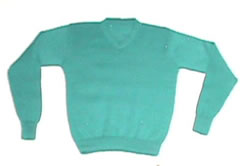 EZ
Swatch: How to make and measure the swatch.
EZ
Swatch: How to make and measure the swatch.  EZ
Swatch: How to make and measure the swatch.
EZ
Swatch: How to make and measure the swatch. Begun....March 4, 2004
Sweater completed March 12, 2004
Page updated March 13, 2004
Lucia Liljegren
Visit
the whole site!
My site is supported by your annual $3 donation.
If you are thrilled with this generator, knitted yourself a whole
sweater and love it, consider supporting my site. The best way is
to make a $3 donation. Click the PayPal logo above!